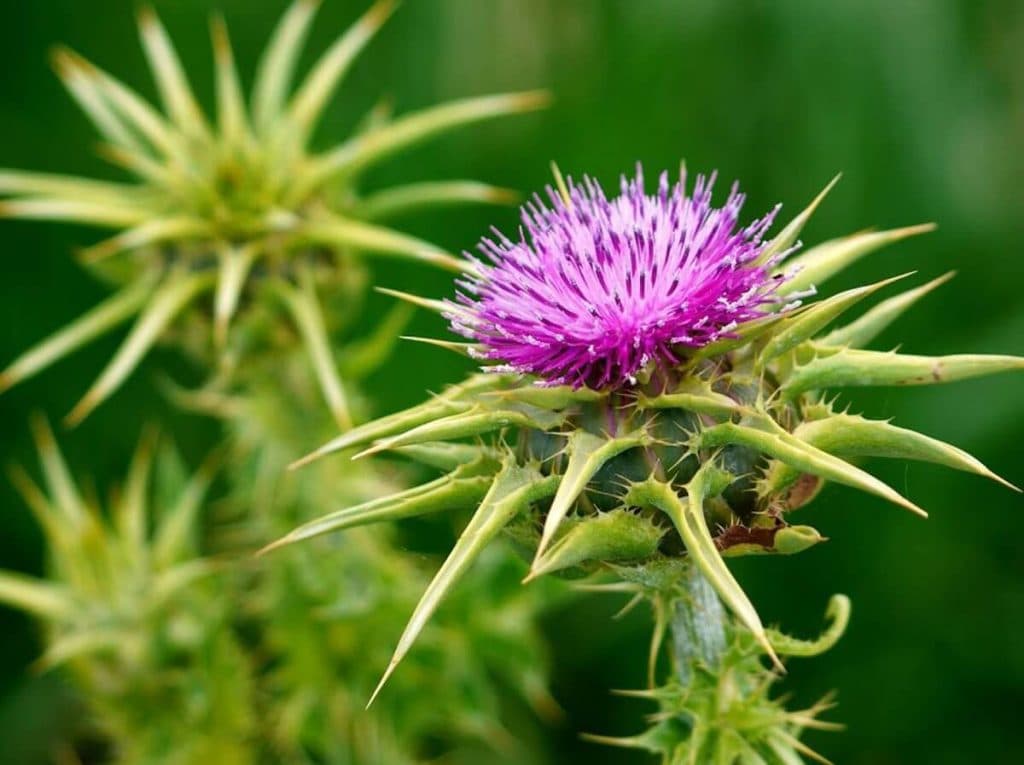
Scientific Name
Cnicus benedictus
Common Names
Blessed Thistle, Holy Thistle
Plant Family
Asteraceae
Location
Native to the Mediterranean region and now grown in temperate climates around the world. It thrives in dry, sunny Locations and poor soil, often found in disturbed ground or cultivated in herb gardens. It’s a hardy annual with self-seeding potential if not harvested.
Description
A spiny, branching herb that grows 1–2 feet tall. Leaves are covered in fine hairs, deeply toothed, and often have white veining. Yellow thistle-like flowers appear at the top of each stem, encased in a spiny bract. The entire plant is bitter and aromatic. When in bloom, it has a rugged beauty that feels wild and resilient.
Uses
Traditionally used as a digestive bitter, liver stimulant, and galactagogue. It promotes bile flow and helps with sluggish digestion, bloating, and appetite loss. Used postpartum to support milk production and clear emotional stagnation. Historically part of "holy herb" blends for spiritual protection and cleansing. Also, mildly antibacterial and used for low-grade infections.
Energetics
Warming, bitter, drying. Moves stagnation. Stimulates liver and digestive fire. Restores a sluggish, cold gut and lifts dull emotional energy.
Parts Used
Aerial parts — leaves and flowers
Constituents
Sesquiterpene lactones (especially cnicin), polyacetylenes, resins, tannins, flavonoids. The intense bitterness is one of its primary medicinal qualities.
Dosage
- Infusion: 1 tsp dried herb per cup hot water; steep 10–15 min (very bitter)
- Tincture (1:5, 40–50% alcohol): 15–30 drops before meals
- Bitters formula: Often combined with gentian, dandelion, or artichoke leaf
Notes on Use
Use Blessed Thistle when wanting to wake up someone’s digestion — especially in cases of dull appetite, gas, or liver stagnation. It also has a protective, somewhat confrontational energy: not soft and cuddly, but very useful for people who need to reconnect with internal fire or boundaries. I rarely use it alone — usually in bitters blends or digestive tinctures where its assertiveness is softened by friendlier herbs like orange peel or fennel.
Harvesting
• Gather aerial parts just as flowers begin to open — this is when bitterness peaks.
• Dry quickly and store in airtight containers away from light and moisture.
Contraindications
Not for use in pregnancy (can stimulate the uterus). Can aggravate dry constitutions due to its drying effect. Avoid with active ulcers. Use with caution in people with excessive internal heat.
Recipes
- Liver Awakening Bitters: Blessed thistle, gentian, orange peel, artichoke leaf
- Postpartum Support Tea: Blessed thistle, raspberry leaf, nettle (in small amounts)
- Spiritual Cleanse Smoke Blend: Blessed thistle, rosemary, lavender (burned carefully)